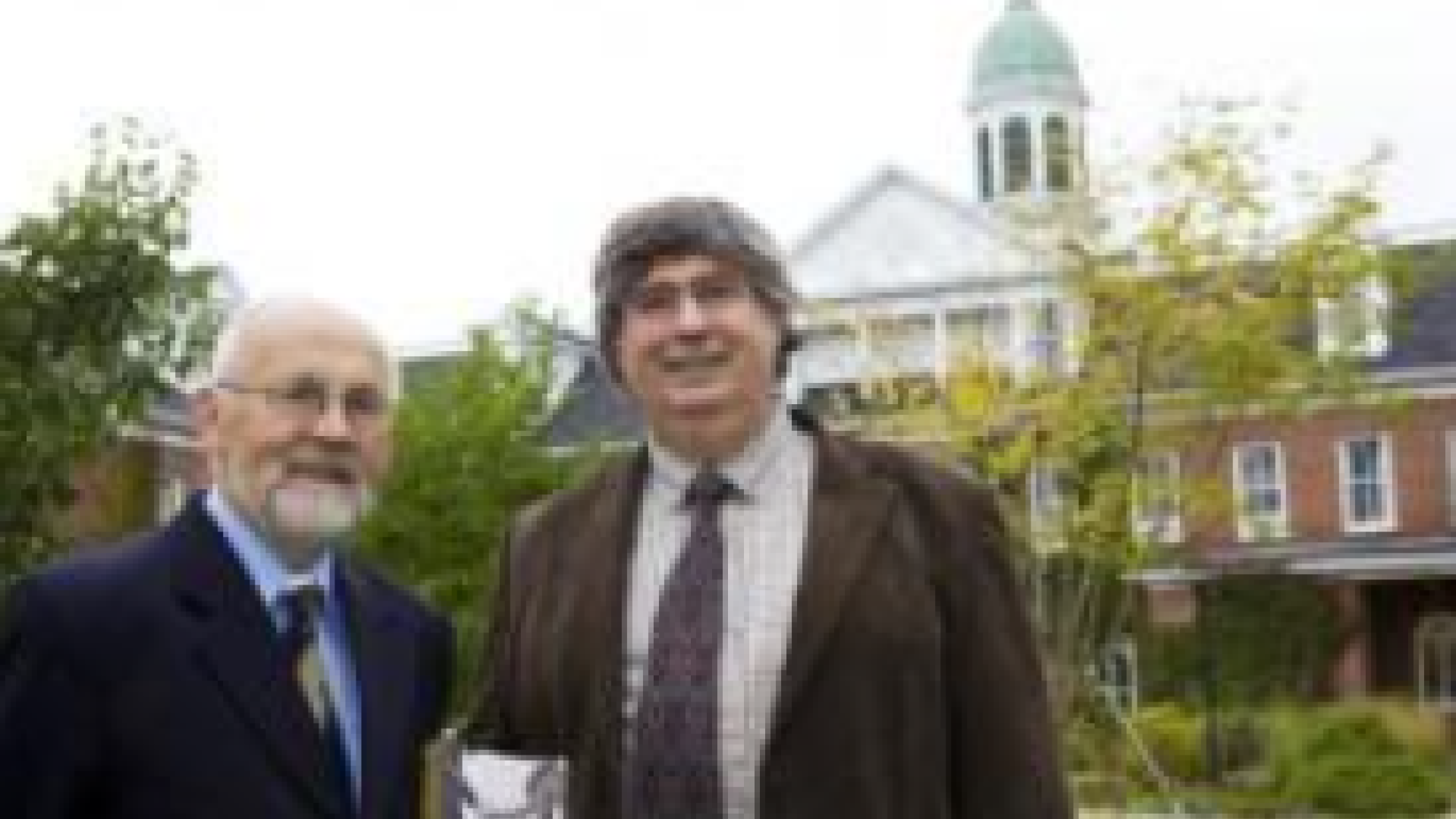
On the StFX campus in the 1930s, reporters from New York City and London, England had gathered at the building that is now the Bauer Theatre to report on an incredible story that was unfolding.
Here in Antigonish, a grassroots economic movement had inspired common people – farmers, fishermen, miners – to take control of their own destinies in Depression-era Nova Scotia. The Antigonish Movement came to be known throughout the world.
Now, two StFX economics professors, Dr. Santo Dodaro and Dr. Leonard Pluta, have published a book, The Big Picture: The Antigonish Movement of Eastern Nova Scotia with McGill-Queen’s University Press, which traces the history of this remarkable experiment from its beginning in the 1930s through to the year 2000.
In The Big Picture, Drs. Dodaro and Pluta give a comprehensive overview of the movement, tracing this history from its origins through a period of expansion during the 1930s and 1940s, to its eventual decline, while identifying the key factors - vision, education, and institutional framework - that contributed to its early success.
Dr. Dodaro is an associate professor of economics. Dr. Pluta is a retired professor of economics.
“It was a project of discovery. What happened in the 1930s that the university became so famous? This is something unbelievable,” Dr. Pluta says on the project, which has been in the works for many years.
Dr. Dodaro, who specializes in development, says he first became interested in the movement after arriving on campus in 1982. He’d hear stories, but there wasn’t much formal information. “I wanted to know exactly what it was, why it worked, why it declined, and to understand what the movement was.”
Intrigued, but not finding much information, the two faculty members did a background study in 1986 when it became “clear it was something extraordinary,” Dr. Dodaro says.
As the scope of the project was immense, they started telling parts of the story through research papers and book chapters. Eventually, they started thinking they could go further.
“It’s a story that needs to be told,” says Dr. Pluta, who started on faculty in 1964. “It’s part of the history of this university. It’s something to be proud of. It gives perspective to the history of this institution.”
Though world-famous at one time, the amazing stories of study clubs of farmers trying to lift themselves out of poverty, of miners starting their own banks, was fading away.
Bits and pieces of the movement – credit unions, the Coady Institute, housing co-ops, are everywhere, Dr. Pluta says, but the story itself was missing.
Dr. Dodaro says there really was no recorded comprehensive effort to understand what it was, what the vision was, and how it was put into effect.
“I see it as something of potential value. I hope people read it, and start a dialogue,” he says on the book, which took many long hours to research, write, and revise.
The movement, he says, also highlights the importance of ideas. And ideas often drive economics. “Here, there was an idea that people could build their own system and put it into effect with no resources and with very little to work with. To me, that was extraordinary.”
Dr. Pluta says The Big Picture is the first comprehensive work that tells the story from beginning to end.
It was during the 1930s, when the competitive, free market system lay in ruins and the competing systems of fascism and communism were gaining strength, that the Antigonish Movement emerged offering a "middle way."
The movement favoured putting in place an integrated and dynamic system based on cooperative economic institutions under the control of the people.
The Antigonish Movement originated with the establishment of the Extension Department of St Francis Xavier University in 1928, with Reverend Moses Coady as director. Guided by the social teaching of the Catholic Church, the movement promoted an array of economic activity and attracted widespread attention around the world.
Visitors flocked to Antigonish to witness ordinary people, fishermen, farmers, and industrial workers, organize and establish their own enterprises, from fish processing plants to credit unions and co-operative stores.
“The disparity between the dreams and the reality was unbelievable,” Dr. Pluta says. “Somehow they were convinced they could do it, and they did do it for awhile, and it helped a great deal of people.”

